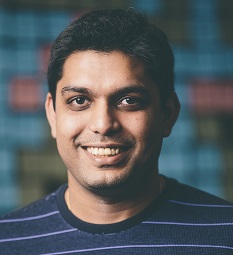WiFi, Whitespace, Wireless microphones: Can They Coexist?
The TV white spaces offer an exciting opportunity for increasing spectrum availability by reusing spectrum not in active use by TVs and wireless mics. While it is simpler to detect TV transmissions, either using sensing or through the whitespace database, the detection of wireless mics is particularly challenging. Their use is dynamic and, furthermore, mic receivers are receive-only devices. For this reason the FCC has made very conservative rules that require white space devices (WSDs) to vacate any TV channel that is in use by a mic. We have been investigating this coexistence problem for over two years. Through a unique setup involving a faraday cage, an anechoic chamber, and white space devices, we characterize the impact of transmissions from WSDs on the audio recording of a wireless mic. We also present SEISMIC, a system that enables WSDs and mics to operate on the same TV channel with zero audible mic interference.
Joint work with George Nychis, Thomas Moscibroda, and Ivan Tashev.
Speaker Details
Ranveer Chandra is a Senior Researcher in the Mobile Computing Research Center at Microsoft Research. His research is focused on systems issues in computer networks. As part of his doctoral dissertation, Ranveer developed VirtualWiFi. The software has been downloaded more than 150,000 times and is among the top 5 downloaded software released by Microsoft Research. It is also shipping as a feature in Windows 7. Among several other projects, Ranveer is co-leading the white space networking project at Microsoft Research. He was invited to the FCC to present his work and spectrum regulators from India, China, Brazil, Singapore and US (including the FCC chairman) have visited the Microsoft campus to see his deployment of the world’s first urban white space network. Ranveer has published more than 35 papers, and filed over 40 patents, 12 of which have been granted. His research has been cited by the popular press, such as CNET, MIT Technology Review, Scientific American, New York Times, WSJ, among others. He has won several awards, including best paper awards at ACM CoNext 2008 and ACM SIGCOMM 2009, the Microsoft Research Graduate Fellowship, the Microsoft Gold Star Award and the MIT Technology Review’s Top Innovators Under 35, TR35 (2010). Ranveer has an undergraduate degree from IIT Kharagpur, India and a PhD from Cornell University.
- Date:
- Speakers:
- Ranveer Chandra
- Affiliation:
- Microsoft Research
-
-
Jeff Running
-

Ranveer Chandra
Managing Director, Research for Industry
-
-
